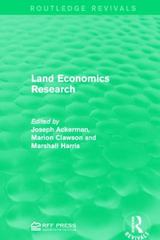Question
URGENT!!! Question is completed. Question 4. [30 points] Consider a variant of the Hotelling's model of candidate positioning in which each candidate does not care
URGENT!!! Question is completed.
Question 4. [30 points] Consider a variant of the Hotelling's model of candidate positioning in which each candidate does not care about whether herself wins the election but instead only cares about the position x of the winner. A continuum of citizens is distributed on interval [1,1] which represent their favorite positions. There are two parties and the only positions they can choose from are -1, -1/2, 0, 1/2, 1. Candidate 1's favorite position is -1/2 and candidate 2's favorite position is 1/2 . After each candidate chooses a position, each citizens will vote for the candidate closest to her favorite position and the candidate with more than 50% of the votes is the winner. Assume that the distribution of the citizens' favorite positions is symmetric around 0, so that if, for example, one candidate's position is 1 and the other's is 1, or one candidate's position is -1/2 and the other's is 1/2, the candidates tie. (Of course, they also tie when they choose the same position.) The distinctive assumption is that each candidate does not care about winning but instead only cares about the position x of the winner. Specifically, if the winner position is x, candidate 1's payoff is candidate 1's payoff is |x ( 1/2 )| and candidate 2's payoff is |x 1 /2|. (For any number z, |z| denotes the absolute value of z: |z| =z if z>0 and |z| = z if z<0.) In case of a tie, the winning position x is defined as the average of candidate 1 and candidate 2's positions. (Note: to solve this game, you should focus on the position of the winner, not on which candidate is the winner.)
1.[6 points] Formulate this situation into a strategic game.
2.[8 points] Verify that action 1 is dominated by another action for player 2. Please specify the action that dominates action 1 and specify whether it is strict or weak domination. (Note: you only need to find one such action.)
3.[10 points] Is there a dominant action for player 2? If yes, please specify this action and specify whether it is strict or weak domination. (Note: you only need to find one such action.) By symmetric arguments, please state a Nash equilibrium where both player 1 and player 2 take a dominant action (You do not need to give any arguments why it is a Nash equilibrium).
4.[6 points] Is there a pure strategy Nash equilibrium where neither player 1 nor player 2 takes her dominant action you found in part (b)? If yes, please specify one such NE. If no, please show your arguments.
Step by Step Solution
There are 3 Steps involved in it
Step: 1

Get Instant Access to Expert-Tailored Solutions
See step-by-step solutions with expert insights and AI powered tools for academic success
Step: 2

Step: 3

Ace Your Homework with AI
Get the answers you need in no time with our AI-driven, step-by-step assistance
Get Started


